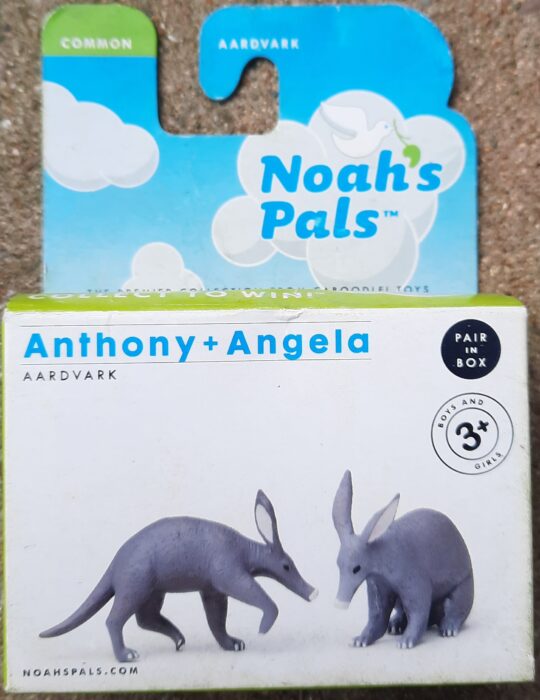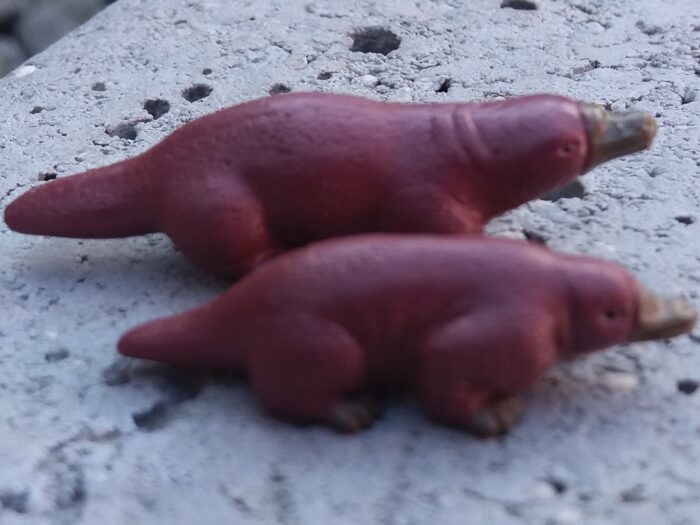Time to head to central and southern Africa for this “Savanah Summer”, as we look into an intriguing omnivore. The aardvark (Orycteropus afer) is the last of the order Tubulidentata, it is a burrowing, nocturnal creature, feeding on ants, termites and the Aardvark cucumber, they are an amazing species, with it’s pig like nose for digging out insects.
Brand: Noah’s Pals
African Bush Elephant, pair (Noah’s Pals by Caboodle! Toys LLC)
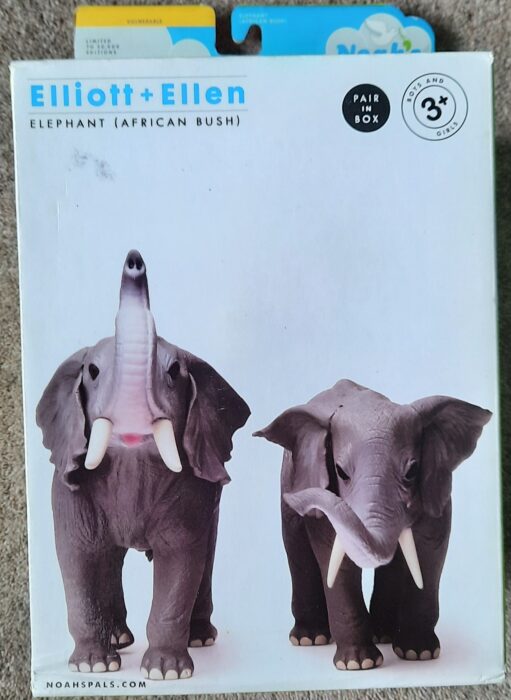
Continuing on with my “Savannah Summer”, when on safari, you want to see the largest species a country have to offer. And when it comes to Africa, there is no larger than the largest land animal on earth, the African bush elephant (Loxodonta africana). These powerful proboscidians populate a large section of Africa, though their numbers are in decline as a result of poaching for ivory made from their tusks.
Lion, pair (Noah’s Pals by Caboodle! Toys LLC)
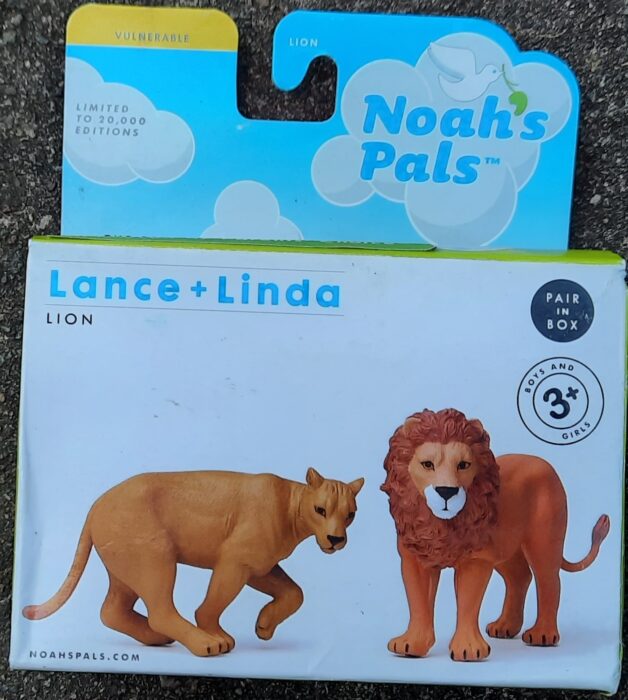
Welcome back to the “Savannah Summer”! Hot weather often makes people want to find a nice, shady spot and just relax, do more later as the temperature dips. This method is also used by the largest mammal predator in Africa, the lion (Panthera leo). Like any cat, they are masters of lazing around, as well as hunting.
Zebra, Pair (Noah’s Pals by Caboodle! Toys LLC)
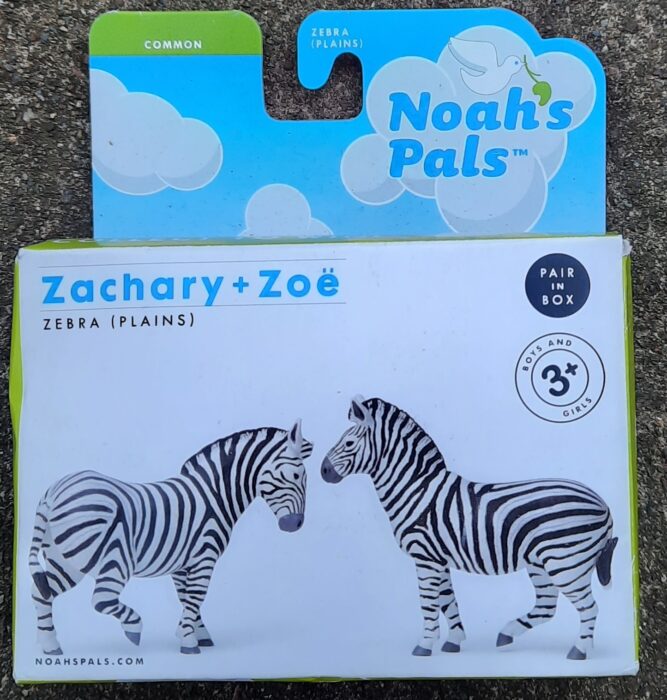
Well, we are in June, the temperature is rising and the weather is becoming sunnier. To celebrate the season, I will be looking into the animals that live on one of the hottest continents on earth, Africa. From the Sahara to the Serengeti, from the Congo to Botswana, I will be reviewing animals from across this amazing place.
Tiger, pair (Noah’s Pals by Caboodle! Toys LLC)

“Tyger, Tyger, burning bright,
In the forest of the night,
What immortal hand or eye
Can frame thy fearful symmetry?” The Tyger, William Blake, 1794
This poem, used in the Songs of Experience by William Blake, was a counterpoint of the Songs of Innocence poem, The Lamb, and you can see why.
Thoroughbred, pair (Noah’s Pals by Caboodle! Toys LLC)
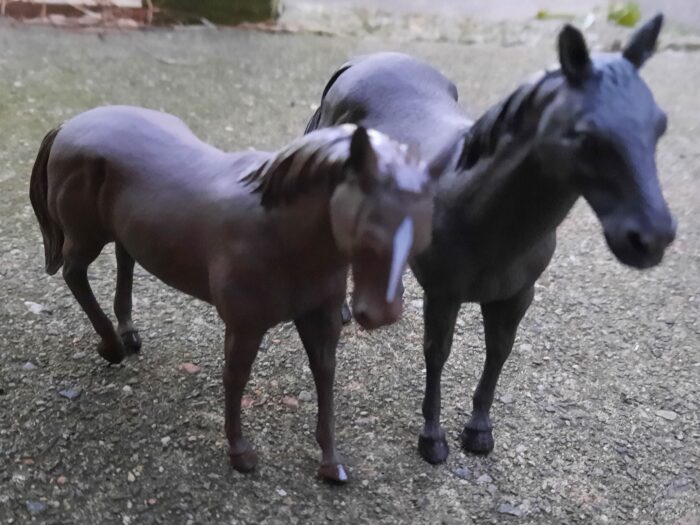
One of the large mammals that survived the Ice Age is the horse (Equus ferus). As a result of domestication by humans and travelling to Asia, it survived the extinctions in North America, and are now widespread across the globe, helping humans travel across tough terrain and long distances.
Labrador, pair (Noah’s Pals by Caboodle! Toys LLC)
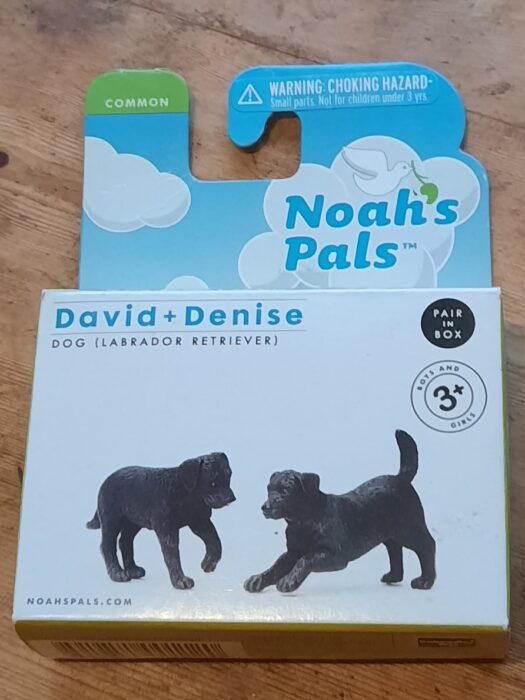
You never know how someone is going to affect your day-to-day life. A month ago, someone I knew down my road passed away. He was never a major part of my life, but he was always there, happy to chat about everything and nothing, always accompanied by a black Labrador (Canis lupus familiaris).
Dalmatian, pair (Noah’s Pals by Caboodle! Toys LLC)
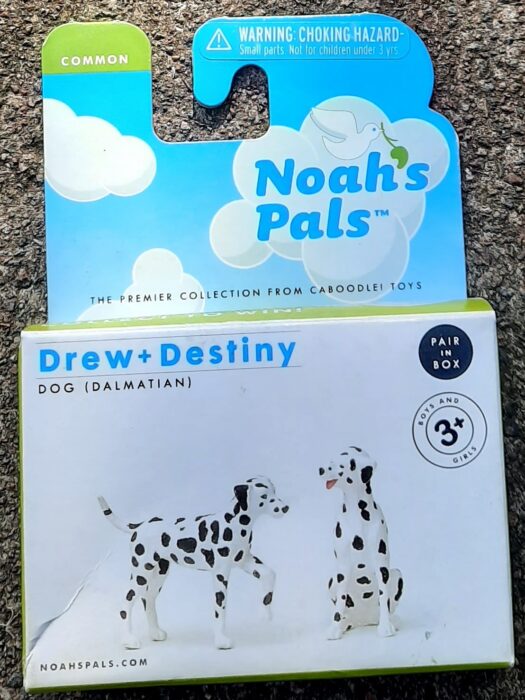
Often referred to as man’s best friend, dogs (Canis lupus familiaris) have been a major part of human life for thousands of years, helping us hunt, track, and keep us company, not to mention modern adaptations, such as helping the afflicted live better lives. No wonder Noah’s Pals made two sets of these animals (though I’d rather have had more wild species, but there you go).
Skunk, pair (Noah’s Pals by Caboodle! Toys LLC)
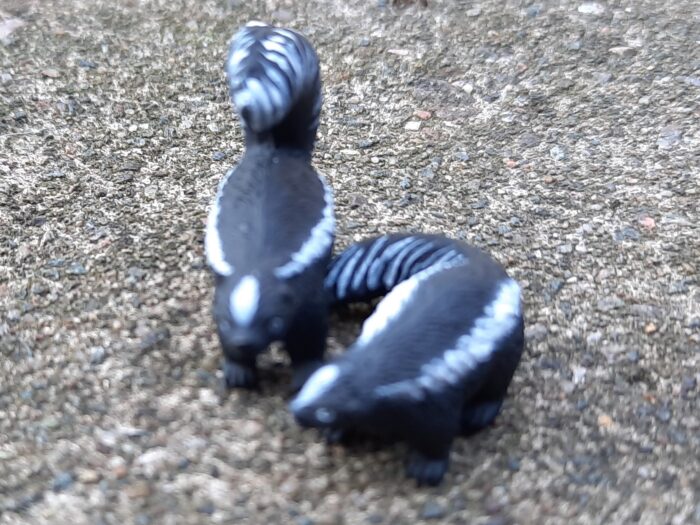
Evolution has produced many ways for life to defend itself, with eyes and jaws, claws and teeth. More interesting to me is when animals use chemical methods to stay alive. From the venomous reptiles to the explosive force of the bombardier beetle, internal chemistry can be a trump card for many animals.
Platypus, pair (Noah’s Pals by Caboodle! Toys LLC)
Dodo, pair (Noah’s Pals by Caboodle! Toys LLC)
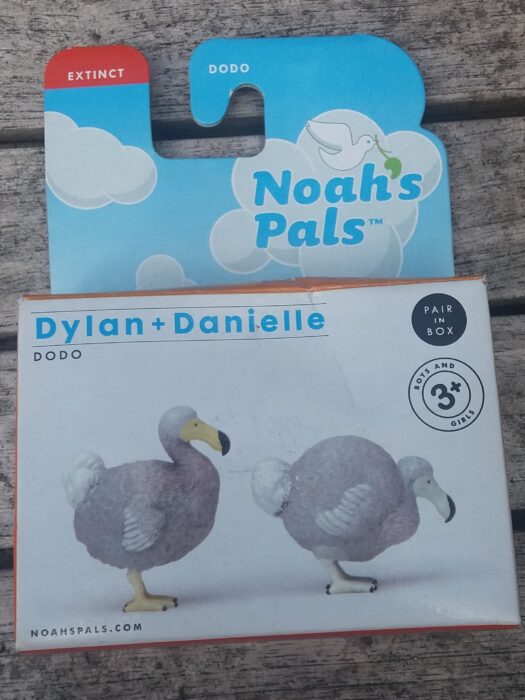
If something is “as dead as a Dodo”, it is very dead, gone forever, reflecting on the fate of said animal, the Dodo. From the island of Mauritius, these flightless pigeons roamed the land, eating fruit and shellfish and lacking fear. Then man came along and introduced new predators, ones that Dodo’s lacked, and soon they were gone from their native lands, never to return.
Impala, pair (Noah’s Pals by Caboodle! Toys LLC)
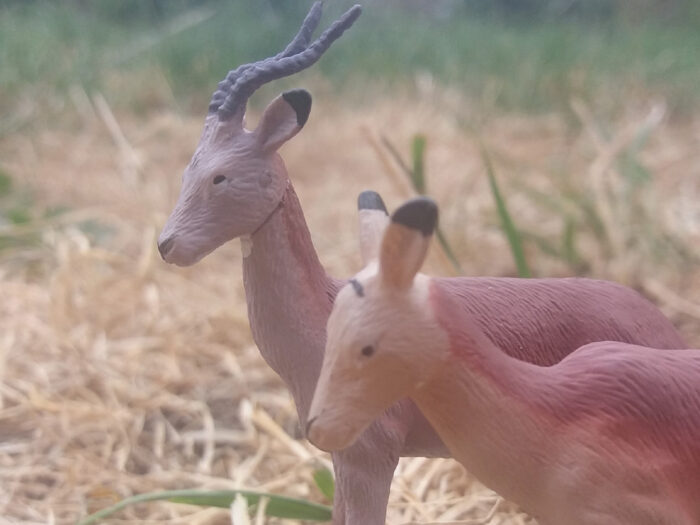
The major force behind the variety of life is the evolutionary arms race between predator and prey. Predators evolve to catch and kill, it’s prey to run or fight back. One of the major groups to have evolved a mix of these ways of prey surviving are antelopes, as they can run quickly, they have horns to fight back.

